Uncommon Magmatic Structures in Granites of the Borborema ProvinceRoberto Weinberg, Monash University, Australia |
| Copyright
2004-2011 by Roberto Weinberg. All rights reserved. Unlimited
permission to
copy or use is hereby granted for non-profit driven enterprise, subject
to inclusion of this copyright
notice and acknowledgment of the source URL: users.monash.edu.au/~weinberg. I would very much appreciate an email stating how this material will be used: Roberto Weinberg, Monash University, Australia. Thanks, RW. DISCLAIMER. The material on this website has not undergone the scrutiny of Monash University and does not conform to its corporate web design. It is entirely based on a free-spritied, curiosity-driven research effort by the author, and therefore in no way expresses the official position of the University. |
| K-rich granites
of the Borborema Province in NE Brazil present a large number of
uncommon magmatic structures which convey the dynamic history of the
magma chamber. Some of these structures were of relatively simple
interpretation (Weinberg et al., 2001). However, there are many other
enigmatic features
which are presented here.
These structures are more than curiosities. They tell us something about chamber dynamics. The purpose here is to illustrate the structures and trigger discussions, ideas and potential collaborations. If you want to help expand this site or connect your own related page to this one please let me know. Weinberg, R.F., Sial, A.N., and Pessoa, R.R. 2001, Magma flow within the Tavares Pluton, NE Brazil: Compositional and thermal convection. Geol. Soc. Am. Bull. 113, 508-520 + cover image. |
Magmatic Structures
Random aggregate patches in homogeneous granite
Aggregate layers: unidirectional protrusions
Ellipsoidal structure
Aggregates at enclave margins
Aggregate spheroid and mafic enclave dyke
Other aggregate-mafic association
Feldspar Aggregate Structures
Random aggregate patches
| A)
Boqueirao Pluton
|
B) Itaporanga Pluton
|
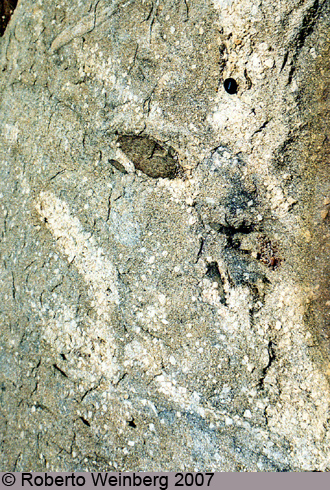
|
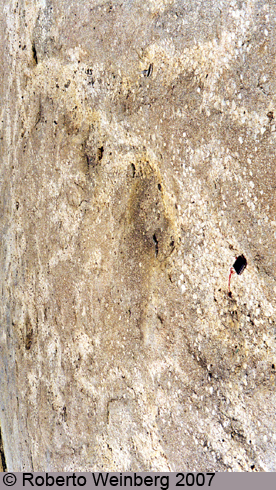
|
Aggregate Layers: Unidirectional Structures
| A) K-feldspar megacryst aggregate forming a 20m long band (to right the photograph). with a flat straight bottom and a hilly top. The country rock is a megacrystic granite/granodiorite, Tavares Pluton. | B) More mafic granitic batch (at the bottom) associated with feldspar aggregate, Campina Grande pluton. See also Aggregates at enclave margins, in particular Fig. F |
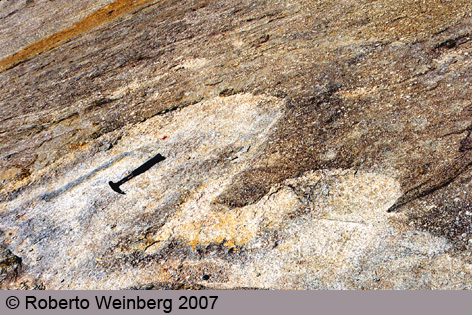
|
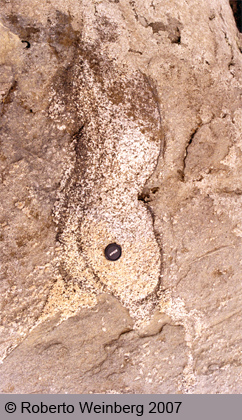
|
| C) Unidirectional mounds on a K-feldspar aggregate layer, Campina Grande pluton. | D) Same outcrop as C) and same orientation, Campina Grande pluton. |
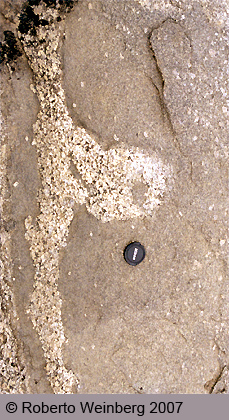
|
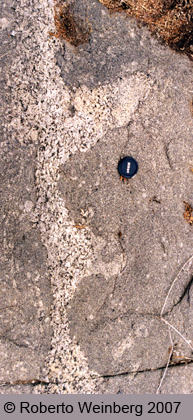
|
Ellipsoid Aggregate Structure
| Aggregate of K-feldspar forming an ellipsoidal structure. This structure is related to other ellipsoidal structures and to Ladder Dykes. Conceicao das Creoulas pluton. |
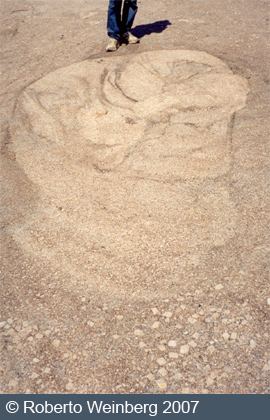
|
Feldspar Aggregates Spheroid and Mafic Enclave Dyke
Feldspar megacryst spheroid linked to disaggregated mafic dyke
A)
Aggregate spheroid related to a curved
mafic enclave dyke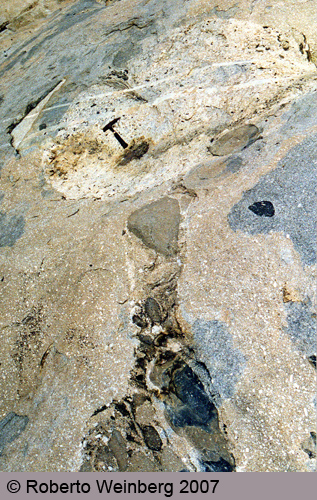
|
B)
Aggregate spheroid 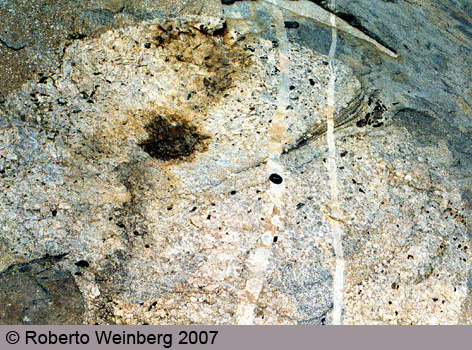
|
C)
Detail inside aggregate 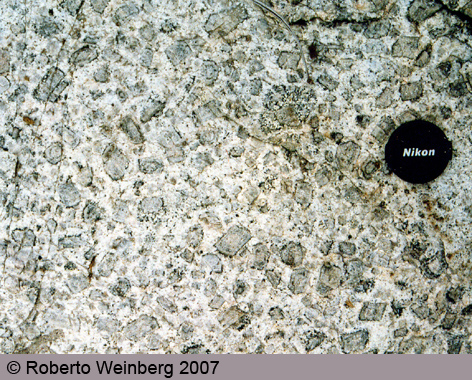
|
Aggregates at enclave margins
| A) Megacryst aggregate filter pressed where mafic pillows separated | B) Curved schlieren indicating magma flow in between enclaves |
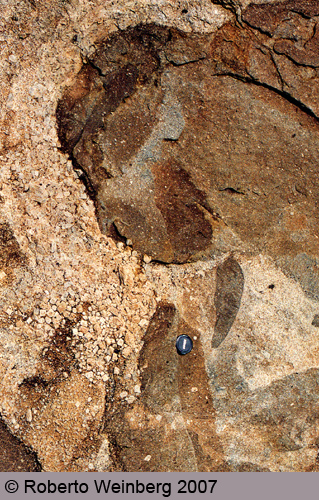
|
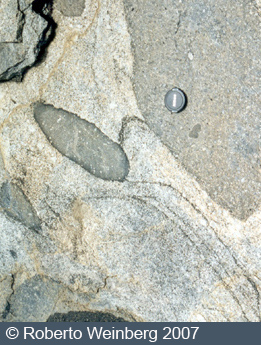
|
| C) Megacryst aggregate around mafic pillow | |
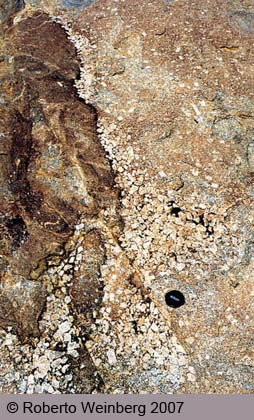
|
| D) Helicoid: mafic enclave and nest of megacrysts rotated by magma flow | E) Mafic enclaves surrounded by a nest of megacrysts, stretched by magma flow |
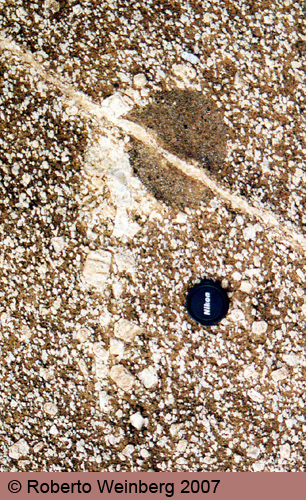
|
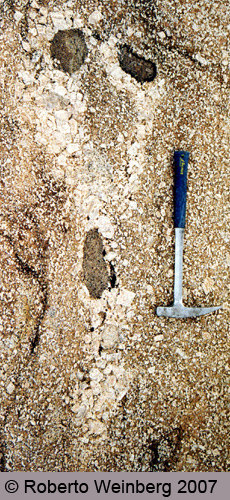
|
| F) Mafic enclaves surrounded by a nest of megacrysts, stretched by magma flow | |
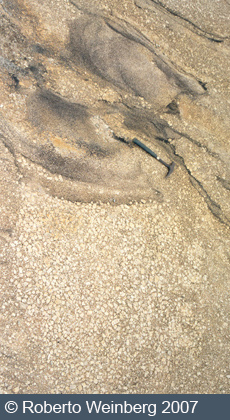
|
Granite Layering
| A)
Complex schlieren
pattern, Tavares pluton
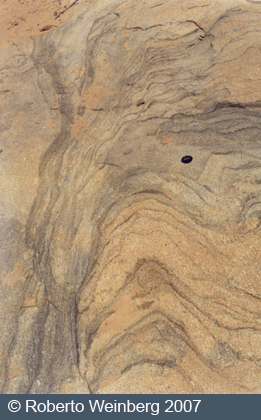
|
B)
Detail of A) showing shearing of schlieren
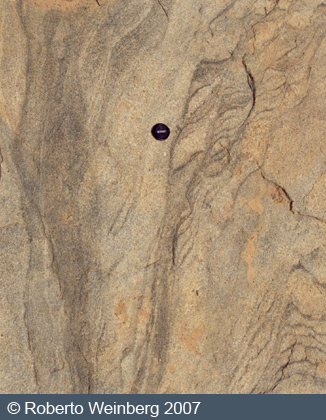
|
| C)
Layering, Itaporanga
Pluton
|
D)
Layering, Itaporanga Pluton
|
E)
Detail of D)
|
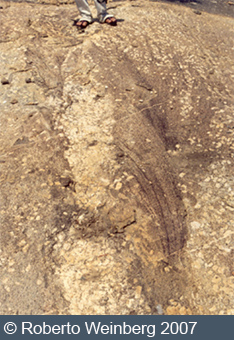
|
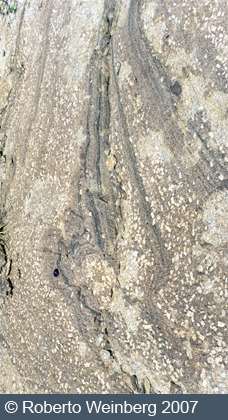
|
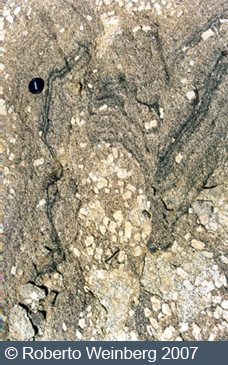
|
F)
Layering, Serra Branca
pluton 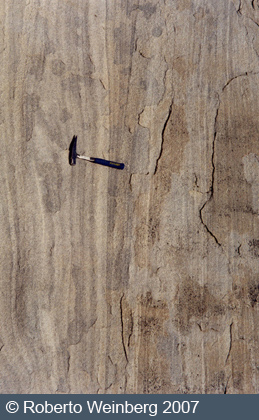
|
G)
Curved layering, Serra Branca
pluton 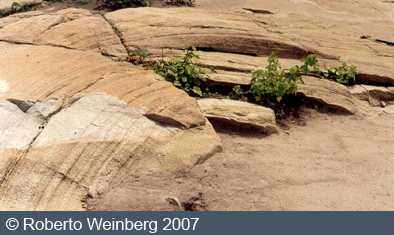
|
H)
Complex layering forming an
elliptical shape, only half the ellipse shown
, Serra Branca pluton 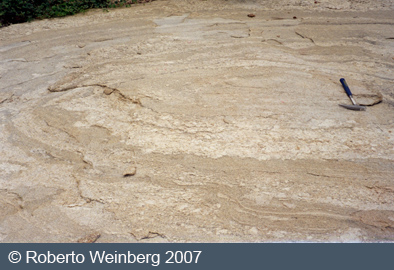
|
Magmatic Ellipsoids and Snails
Ellipsoids in Tavares pluton
A)
Three ellipsoids,
Tavares
pluton 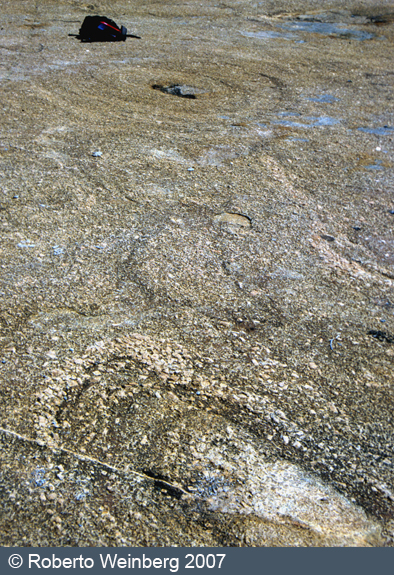
|
B)
Ellipsoid, Tavares 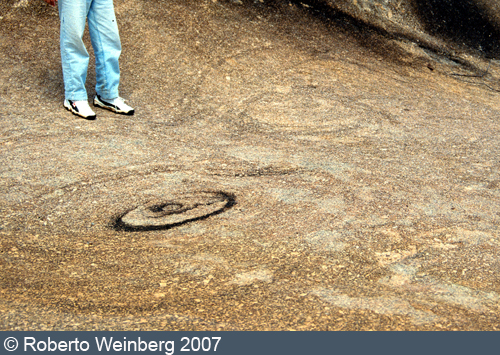
|
Ellipsoids in tonalitic Tanzawa pluton, Japan, courtesy of Dr Tetsuo Kanamaru, Kobe University, and Dr Ryo Anma, Tsukuba University
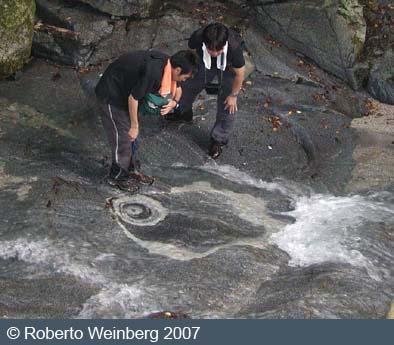
|
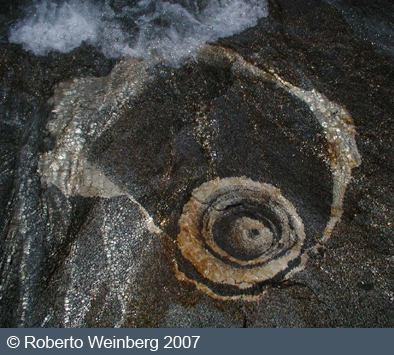
|
Magmatic Snails
A)
Snail structure,
Tavares pluton 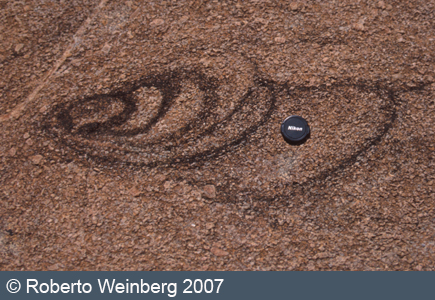
|
B)
Snail structure, Tavares pluton 
|
Magmatic Diapirs, Tavares pluton
A)
Diapir delineated
by schlieren 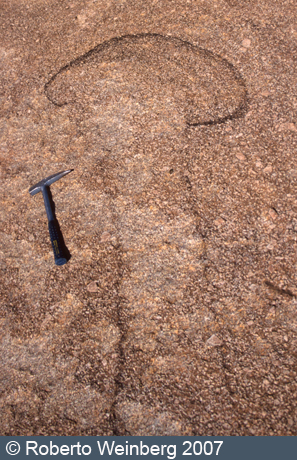
|
B)
Enclave-rich diapir in granite 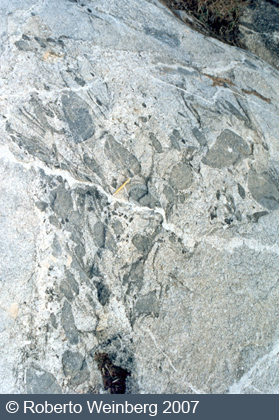
|
C)
Diapir with poorly developed ladder
structure along stem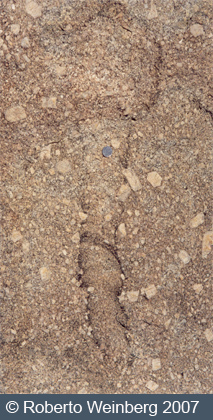
|
D)
Magma channel depicted by schlieren
margin. Diapir stem?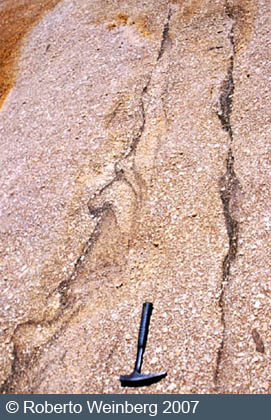
|
Ladder Dykes
Weinberg et al. (2001) explained these structures as marking the stem of a rising plume or diapir where the source moved in relation to the exposed surface, so it marks the path of the source, like a hot spot. There are other less well-developed examples of ladder dykes in other sections of this website (e.g., Complex Dykes below). Ladder dykes and snails are thought to be formed by similar processes and Ellipsoids and Diapirs to represent the leading head of the rising magma batch on top of the stem.
A)
Long ladder
dyke, Tavares
pluton 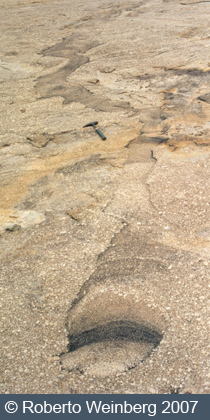
|
B)
Detail of A 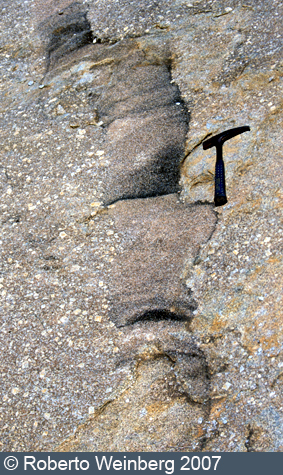
|
E)
Begining of dyke
in A), Tavares pluton 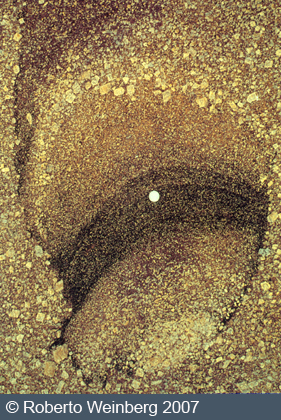
|
D)
Detail of dyke in A), Tavares pluton 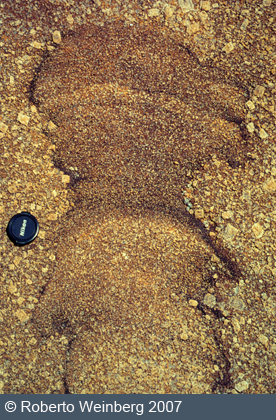
|
E)
Poorly developed
ladder dyke, Conceicao
das Creoulas pluton 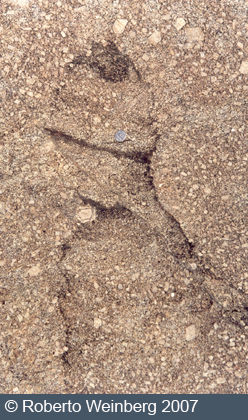
|
Complex Dykes
These are a group of dykes mostly from the Tavares pluton with complex internal structures. Some of which develop into ladder dykes (C and D), some are split along strike in one mafic part and a felsic part (E and F, also D), G) has irregular schlieren roughly parallel to the walls, and H) is a composite dyke formed by an early darker rock intruded by a later whiteish dyke, which cuts across the early dyke from right to left, upwards in the photo. At present most of these features remain unexplained.
A)
Dyke breccia,
Itaporanga pluton 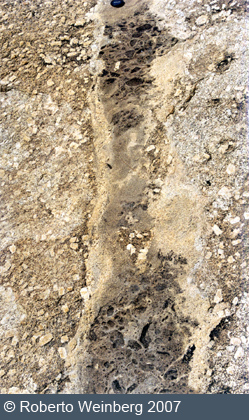
|
B)
Several interlinked complex dykes 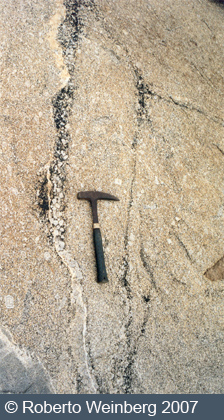
|
C)
Ladder dyke going into K-feldspar
megacryst rich magma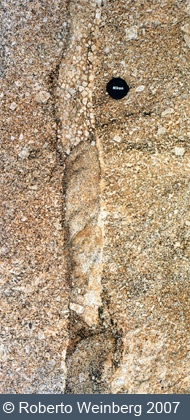
|
D)
Mafic and felsic dyke at the base grade
upwards into ladder dyke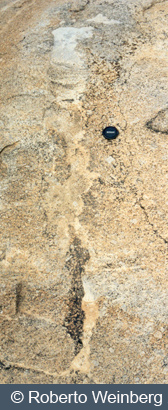
|
E)
Mafic dyke
turns to felsic halfway 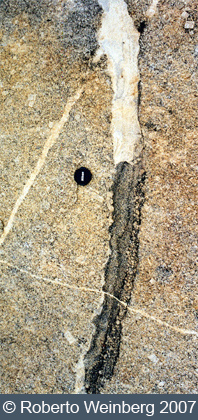
|
F)
Mafic and felsic complex layering in dyke 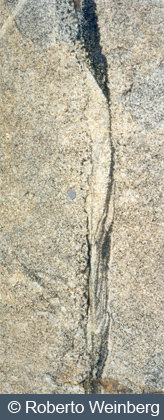
|
G)
Schlieren in dyke with non-planar
walls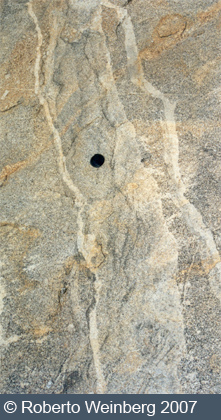
|
H)
Composite dyke (later felsic dyke) cutting
across layered granite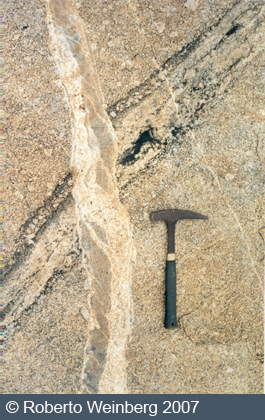
|
Flow structures
Magmas in the Borborema plutons have a number of internal flow markers, such as the diapirs above, delineated by schlieren, other mafic schlieren marking flow between enclaves, and also as shown here in A) magmatic layering marks flow around a rigid block, and enclaves mark the flow of different internal magma batches (B and C). poor magma batches
A)
Magmatic flow around an
angular autoclave of granite, Tavares
pluton 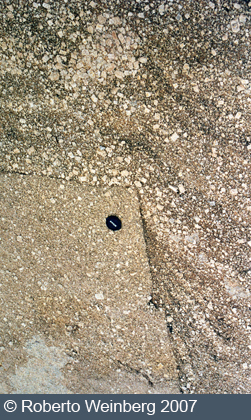
|
B)
Internal contact between magma
batches, Itapetim pluton 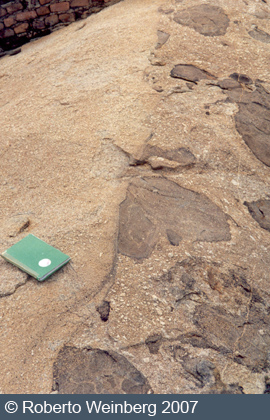
|
C)
Deformed enclaves forming an
arc at the margins of an internal flow (white arrows), same outcrop as
B), Itapetim Pluton 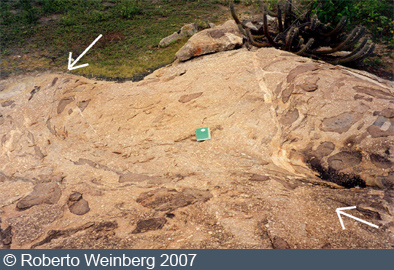
|
Interstitial Melt Extraction
Segregation structures are thought to represent filter pressing of interstitial melt from a crystallizing magma with a solid interconnected network, effectively behaving like an isotropic migmatite. All structures are from Tavares pluton
A)
Felsic melt flowed into an
opening in rigid magma 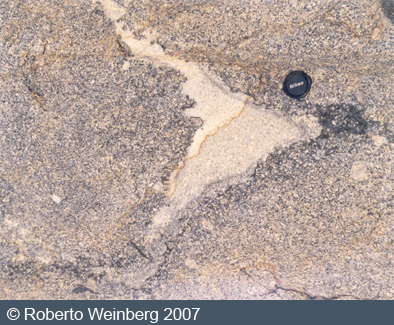
|
B)
Felsic interstitial melt
diapir, extracted from crystallizing magma 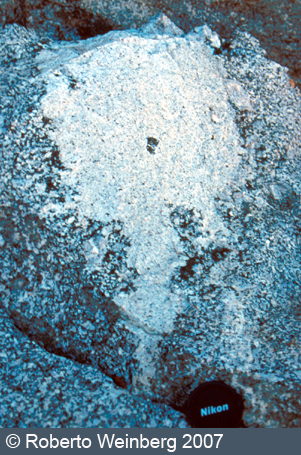
|
C)
Liquefaction structure in an
isotropic granitic magma causing separation of mafic minerals
from felsic melt and horizontal layering 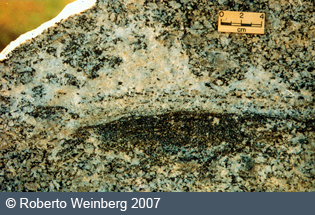
|
Generally homogeneous granite becomes heterogeneous with mafic-rich bands in the vicinity of an irregular patch of leucocratic granite, suggesting it formed from local extraction of interstitial evolved melt, as magma crystallized. In its entirety, these extraction structures represent a filter pressing step in magma fractionation.
D)
Irregular
3D extraction structure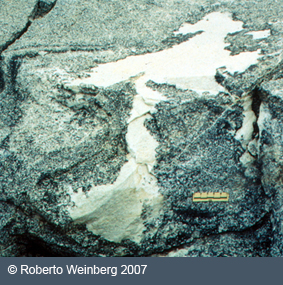
|
E)
What is going on here? 
|
F)
Residual material (mafic) from
extraction of interstitial melt frozen in
pockets (leucosome).
Extraction channelways? Same outcrop as B,C and D. 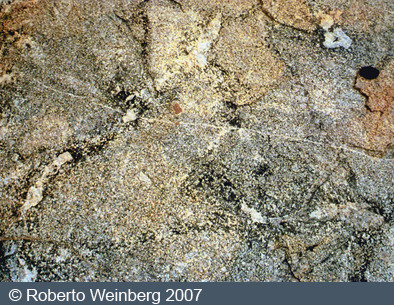
|
Complex extraction features?
G)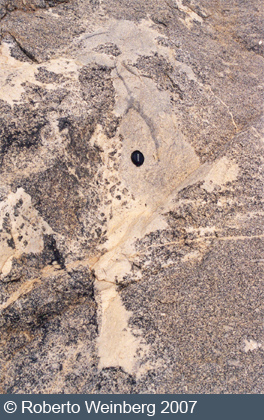
|
H)
Detail of G) 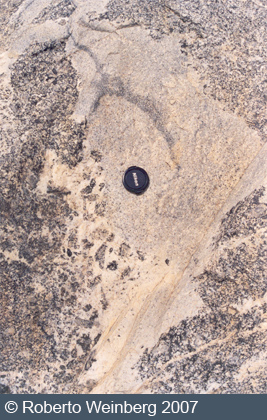
|
Magmatic and Subsolidus Feldspar Deformation
Some beautiful megacryst deformation in Itaporanga and Pedra Mijada plutons. In Itaporanga many megacrysts are bent as in (A) suggesting squeezing of interstitial magmas and megacryst deformation
A)
Squeezed and bent cumulate
K-feldspar. Is
this magmatic?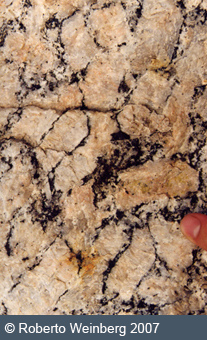
|
B)
Tail in K-feldpar megacryst (5 cm long),
accompanied by other grains with no tails.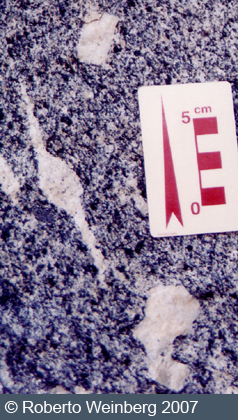
|
C)
Solid-state zoned K-feldspar from Pedra
Mijada Pluton for comparison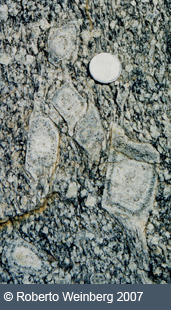
|
Dendritic K-feldspar in Boqueirao pluton

|
Liked the structures? Want to know more? Contact me on my email